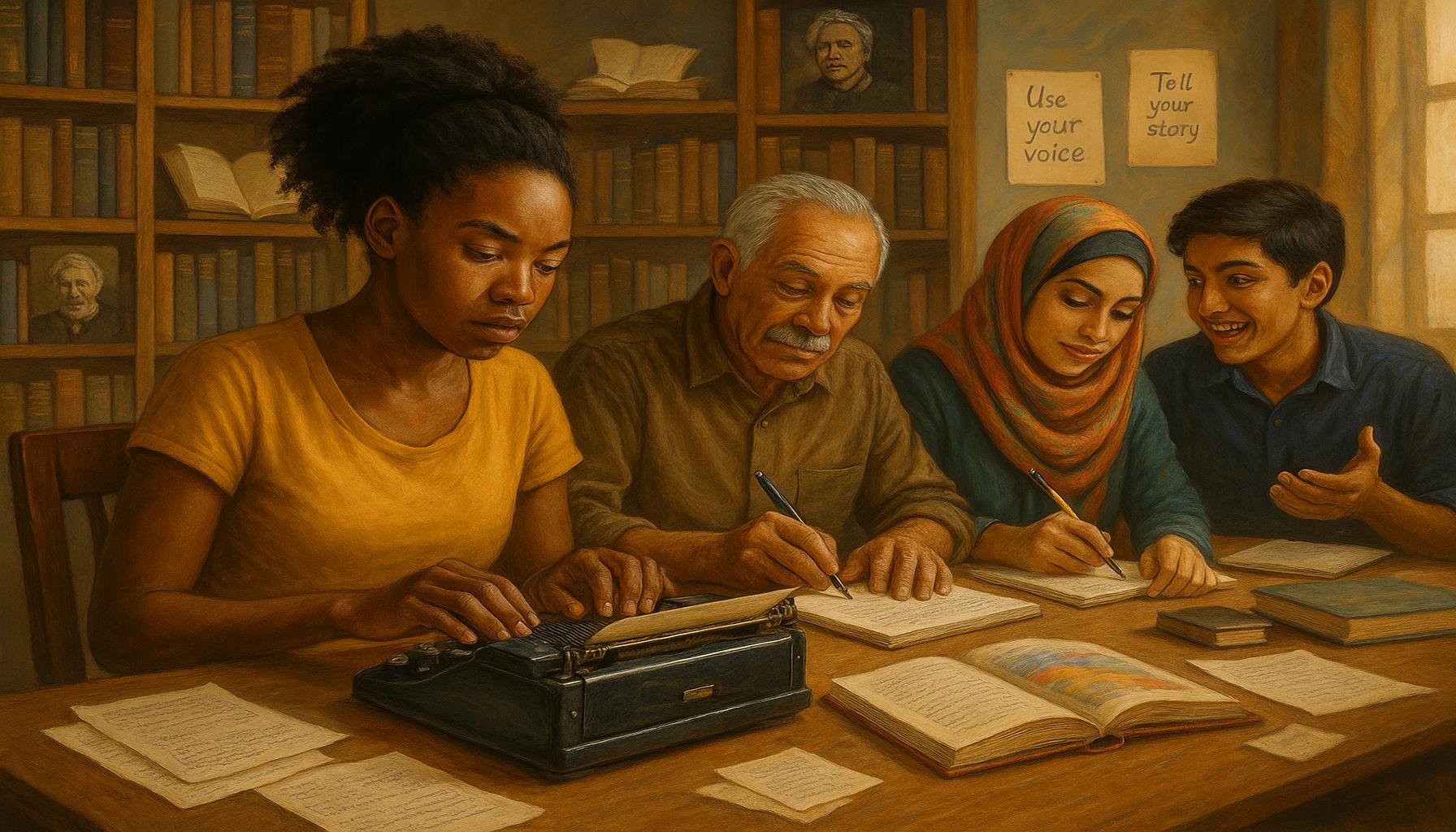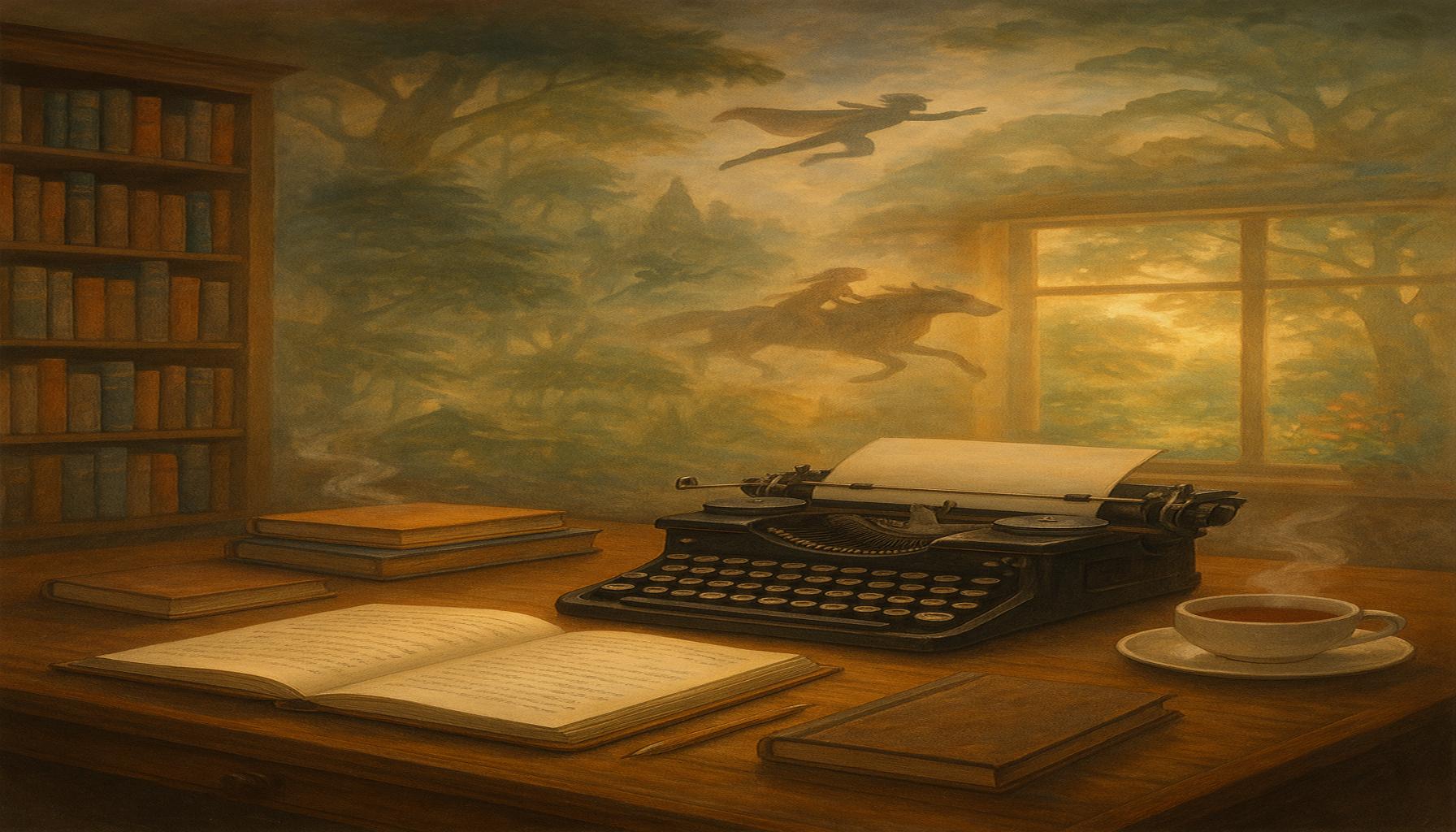The Power of Collaborative Writing: How Group Projects Can Stimulate Creativity

Collaborative Writing: A Catalyst for Creative Growth
In today’s fast-paced world, collaborative writing is more than just a trend; it’s a powerful tool that enhances creativity. Group projects encourage diverse perspectives, which can lead to remarkable results. Everyone brings unique ideas, skills, and experiences to the table, enriching the collaborative process. This intersection of varied backgrounds fosters an environment where ideas can thrive, and innovation can flourish.
Consider the following key benefits of collaborative writing:
- Enhanced brainstorming: Group dynamics can spark innovative ideas that an individual might overlook. For instance, during a writing workshop, a group of aspiring authors may brainstorm plot twists that none of them would have considered alone. This collective brainstorming session often leads to more nuanced and multifaceted narratives.
- Improved problem-solving: Multiple viewpoints help identify solutions more effectively. When a team collaborates on a project, like creating marketing content or crafting a screenplay, they can approach obstacles from various angles, leading to more comprehensive solutions. An example could be a marketing team faced with a plateau in engagement; diverse input might uncover unique tactics that revive audience interest.
- Increased motivation: Working together creates accountability and boosts enthusiasm. A clear example of this can be seen in writing groups where members share their progress regularly. This communal structure not only helps individuals stay committed to their writing goals but also fosters a supportive environment where encouragement is prevalent.
Studies show that teams often outperform individuals in creative tasks, making collaborative efforts invaluable in professional settings. According to research published in the Journal of Creative Behavior, groups engaged in collaborative writing often produce work that is not only higher in quality but also more original than that produced by solo writers. Moreover, this trend extends beyond literary pursuits; it’s common in industries such as technology, marketing, and design, where collective brainstorming leads to groundbreaking ideas.
For writers, artists, and problem solvers across America, collective endeavors offer a fertile ground for creativity to flourish. Organizations like National Novel Writing Month (NaNoWriMo) encourage collaborative efforts among writers. Participants often find that sharing their work and challenges with peers transforms their writing experience into an engaging communal journey.
In the following sections, we will delve deeper into how group projects can invigorate your creative process and provide practical tips for maximizing the benefits of working together. Discover the transformational impact of collective intelligence and learn how to harness the power of collaboration—not just as a collective effort, but as a means to elevate your own creative potential.

DISCOVER MORE: Click here to learn about the benefits of art therapy
Unlocking Creative Synergy Through Collaboration
Group projects in writing serve as a pivotal mechanism for unlocking creative potential. When individuals from varying backgrounds and experiences come together, they create a dynamic atmosphere conducive to inspiration and ingenuity. This alliance not only leads to a richer pool of ideas but also encourages writers to break free from their creative limitations. Here are several dimensions of collaborative writing that accentuate its role as a creativity catalyst:
- Cross-Pollination of Ideas: Collaboration encourages the exchange of diverse concepts. As team members share different viewpoints, the dialogue can spark new ideas and approaches. For instance, a group of content creators may merge storytelling techniques from fiction with engaging marketing strategies, crafting narratives that resonate with audiences in unexpected ways.
- Varied Skill Sets: Each participant in a collaborative project often brings a distinct skill set to the table. Some may excel in research, while others might have a knack for persuasive writing or visual storytelling. This blend of strengths allows the team to tackle complex writing projects with greater ease and sophistication, leveraging the unique talents of each member. A collaborative report might combine data analysis with vivid storytelling, creating an engaging narrative that delivers information compellingly.
- Creative Risk-Taking: Working in a group instills a sense of camaraderie, making it easier for individuals to take creative risks. A writer may feel more empowered to experiment with unconventional structures or themes when supported by their peers. This collective encouragement can lead to groundbreaking works that push boundaries and challenge traditional norms.
- Constructive Feedback: One of the most beneficial aspects of collaborative writing is the opportunity for immediate feedback. Peers provide insights that can refine ideas, identify potential pitfalls, and enhance overall quality. This feedback loop helps writers adapt their work in real-time, ensuring a more polished final product, whether it’s a screenplay or a collaborative blog post.
Interestingly, research has indicated that collaborative writing not only cultivates creativity but also enhances critical thinking and communication skills. According to a study published in the Journal of Group Psychology, participants engaged in collaborative writing frequently reported higher levels of satisfaction and creativity compared to those who worked in isolation. This community-oriented approach helps to break down barriers and create an enriching environment where creativity thrives.
Organizations, educational institutions, and creative collectives across the United States are increasingly recognizing the value of collaborative writing. For instance, many universities now incorporate group writing assignments into their curricula, allowing students to hone their collaborative skills while gaining firsthand experience in real-world writing scenarios. The ultimate goal is to prepare future writers and professionals for a landscape that increasingly prioritizes teamwork and innovation.
As we explore further into the impact of group projects on the creative process, we will outline effective strategies to facilitate collaboration and ensure that collaboration not only enhances creativity but also leads to exciting new possibilities in writing and beyond.
The Dynamics of Collaborative Writing
Collaborative writing is not just about pooling together ideas; it’s a vibrant process that engages individuals in a creative exchange that can lead to innovative results. One of the most significant advantages of group projects is the amalgamation of diverse perspectives. When various team members contribute their unique experiences and skills, they create a rich tapestry of ideas. This not only fosters creativity but also broadens the potential solutions to any given problem.Moreover, group collaboration cultivates a sense of community. This social aspect can enhance motivation, encouraging individuals to push their creative boundaries. Team members often inspire each other, leading to spontaneous brainstorming sessions that can generate unexpected ideas. The interplay of thoughts and discussions can catalyze breakthroughs that might not have occurred in isolation.Shared responsibility is another crucial aspect of collaborative writing. It alleviates the pressure on an individual, allowing for more risk-taking in the creative process without the fear of failure. Experimenting with different writing styles or tones becomes feasible as group members support one another. As a result, the written content typically exhibits a richer depth and variety, showcasing the combined strengths of all contributors.Additionally, the process of giving and receiving feedback is integral to the collaborative writing experience. Constructive criticism can lead to refined ideas and improved writing quality. This continuous cycle of feedback not only sharpens the individual’s writing skills but also enhances the collective output, fostering a culture of improvement. These interactions are essential in pushing the overall creative envelope further, promoting an environment where shared creativity thrives. Next, we delve into the tools and techniques that facilitate collaborative writing, making it easier than ever to create compelling works as a cohesive unit.
| Category 1: Benefits of Collaborative Writing | Category 2: Descriptions |
|---|---|
| Diverse Perspectives | Integrating ideas from different backgrounds enhances creativity. |
| Shared Responsibility | Alleviates individual stress, allowing for more experimental writing. |
| Constructive Feedback | Improves writing quality and stimulates innovative ideas. |
As we explore further, we will investigate the various tools and techniques that simplify the collaborative writing process and enhance our ability to create collectively.
DISCOVER MORE: Click here to unlock the secrets of creative writing
Strategies to Enhance Collaborative Writing and Foster Creativity
To fully harness the power of collaborative writing, implementing effective strategies is crucial. These strategies can create an environment that not only stimulates creativity but also maximizes the benefits of teamwork. Below are several techniques that can help facilitate successful group writing projects:
- Establish Clear Goals: Setting concise objectives is essential for any collaborative effort. When group members understand the ultimate purpose of their project—be it crafting a compelling narrative, producing a research paper, or designing a marketing campaign—they can align their efforts accordingly. Establishing a shared vision from the outset ensures that everyone remains focused on the same target, minimizing distractions and enhancing productivity.
- Utilize Collaborative Tools: Taking advantage of technology can transform the collaborative writing experience. Tools such as Google Docs, Microsoft Teams, or writing platforms like Scrivener allow team members to contribute, edit, and comment in real-time. These platforms not only keep all contributors on the same page but also encourage constant engagement and interaction, which are vital for creative brainstorming.
- Encourage Open Communication: Creating an atmosphere where team members feel comfortable sharing their ideas is paramount. Regularly scheduled check-ins or brainstorming sessions can provide structured opportunities for dialogue and idea sharing. Facilitators can encourage all voices to be heard, ensuring that quieter members have the chance to contribute innovative insights that might otherwise go unnoticed.
- Implement an Iterative Review Process: An iterative approach to writing allows groups to refine their work continuously. Instead of waiting until a draft is fully completed, teams can review sections as they are written. This not only helps maintain the momentum of creativity but also allows for immediate improvements based on group feedback. This loop of iteration supports the development of dynamic, well-polished writing.
A fascinating element of collaborative writing is its potential to challenge perspectives, particularly in educational settings. Studies indicate that students who participate in group writing assignments often demonstrate enhanced critical thinking and stronger problem-solving skills. A report from the National Writing Project revealed that students stationed in collaborative environments produced more innovative writing and expressed greater confidence in their abilities compared to those engaged in solitary writing tasks.
Moreover, collaborative writing is not limited to academic settings. In the professional realm, many organizations are integrating group writing project methodologies into their workflows. Corporations are starting to acknowledge that creativity flourishes in collective environments. For instance, global brands often assemble cross-functional teams to develop marketing campaigns, promoting diverse thinking and tapping into a broader range of expertise. This not only yields unique creative outputs but also strengthens team dynamics and fosters a culture of innovation.
Additionally, overcoming challenges such as conflict resolution is imperative in collaborative writing. Disagreements can arise when multiple creative minds converge. It’s essential to approach these conflicts constructively, focusing on finding common ground and leveraging team strengths to navigate differing viewpoints. Establishing a framework for conflict resolution ensures that creativity remains unhindered.
As we delve deeper into the dynamics of collaborative writing, understanding and applying these strategies can significantly enrich the creative process. The mere act of collaborating has the power to elevate the quality of writing while fostering a sense of community among participants, ultimately leading to more profound creative breakthroughs.
DIVE DEEPER: Click here to uncover the beauty in everyday moments
Conclusion
In conclusion, the power of collaborative writing is undeniable, offering a unique platform for individuals to merge their ideas, talents, and creativity in a shared endeavor. Group projects not only lead to enhanced creativity but also foster critical thinking and problem-solving abilities essential for both academic and professional success. By implementing strategies such as clear goal setting, utilizing collaborative tools, and ensuring open communication, teams can streamline their efforts and enhance their creative outputs.
Furthermore, the dynamics of collaborative writing extend beyond the confines of the classroom. As organizations embrace collaborative methodologies, they increasingly recognize the value of diverse perspectives in creating innovative solutions and engaging narratives. The incorporation of varied experiences and viewpoints often results in revolutionary creative expressions that would be unlikely to arise in isolation.
Moreover, addressing challenges such as conflict resolution within a collaborative framework is crucial. This not only nurtures a healthy environment for creativity but also empowers teams to harness their collective strengths, ultimately propelling them towards greater success.
As we navigate an era that heavily emphasizes teamwork and cooperation, understanding the intricacies of collaborative writing becomes essential. By continuing to explore and refine our approaches, we can unlock even greater potential within our creative processes. So, whether in education or the professional realm, embracing collaborative writing can serve as a formidable catalyst for innovation and creativity. The journey of collective expression awaits, and together, the possibilities are limitless.



